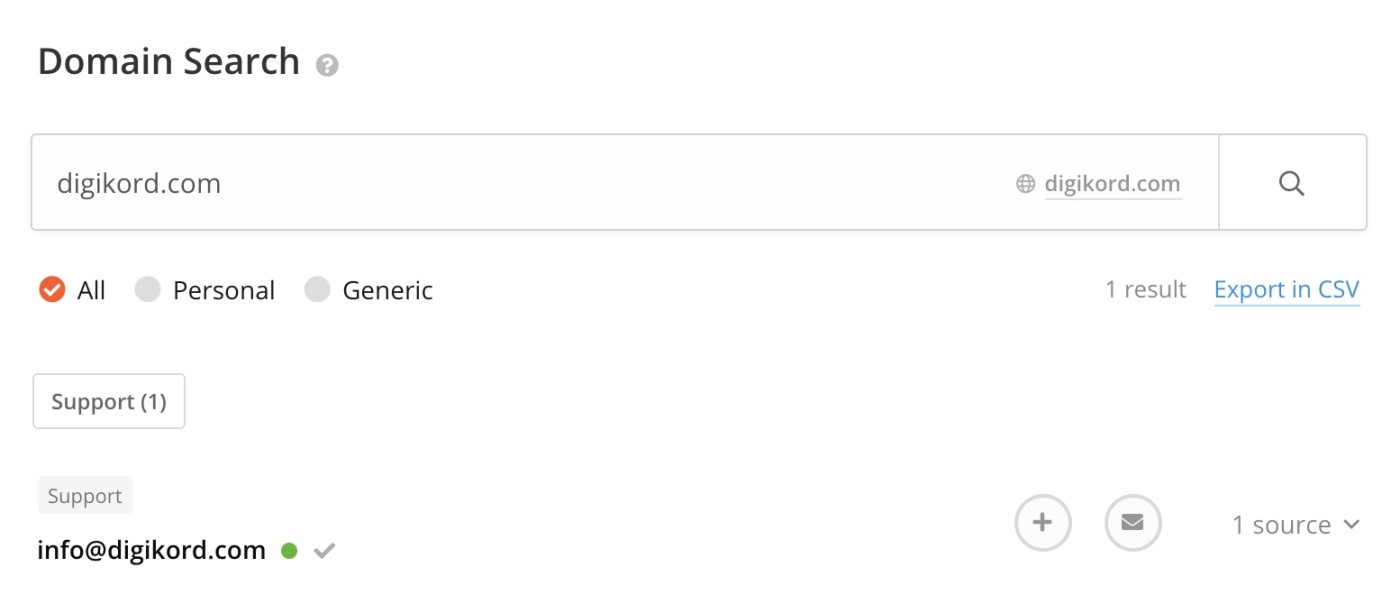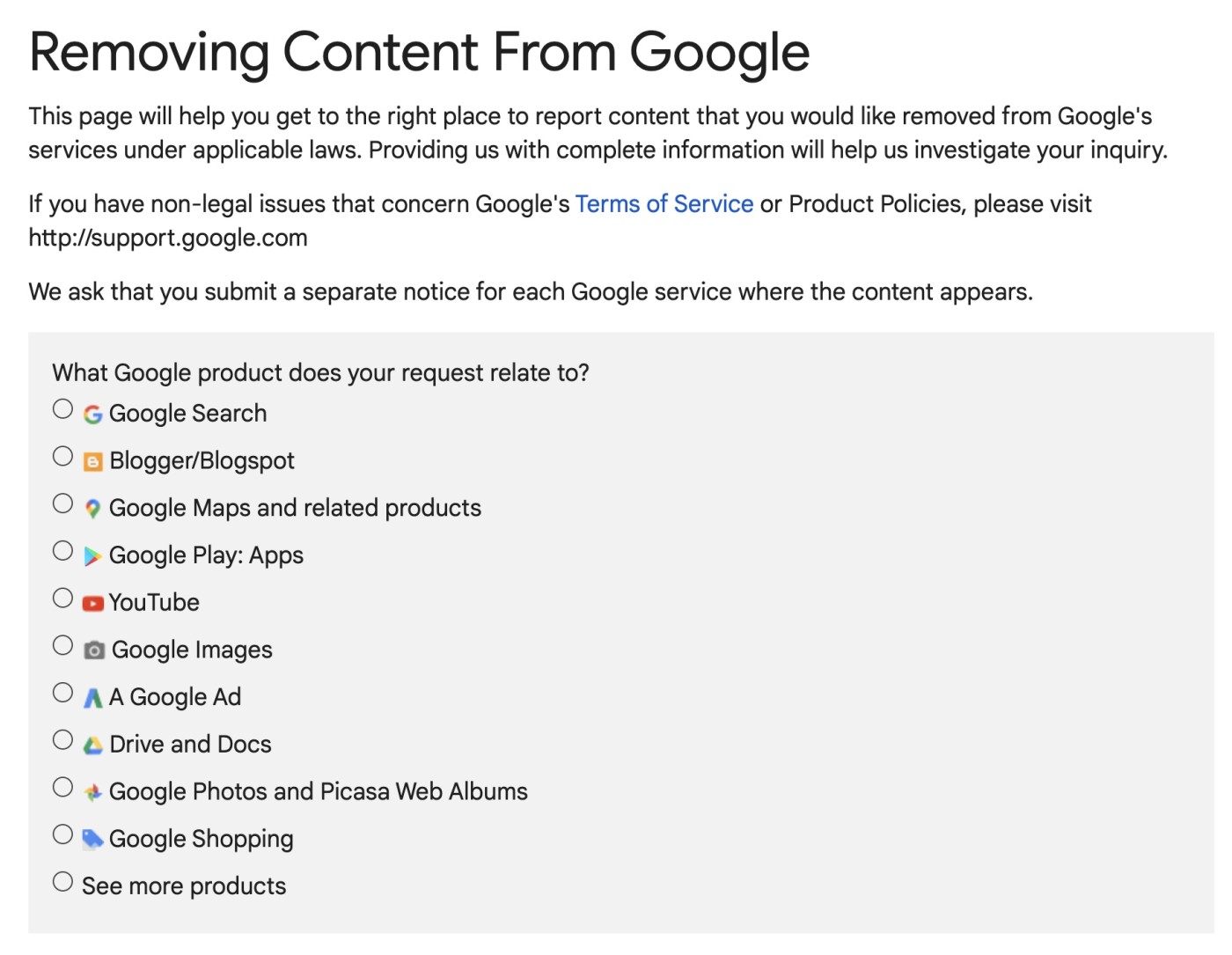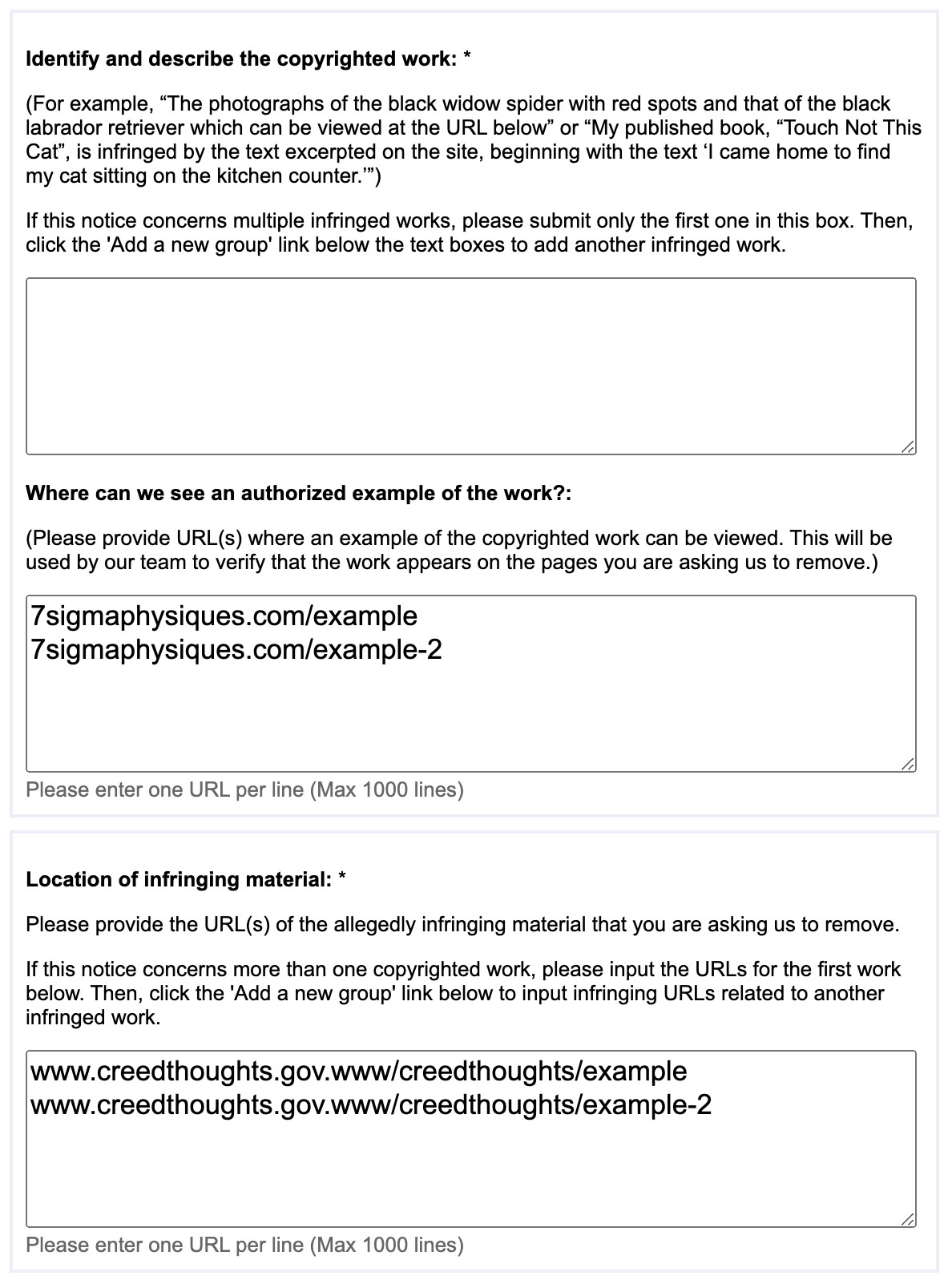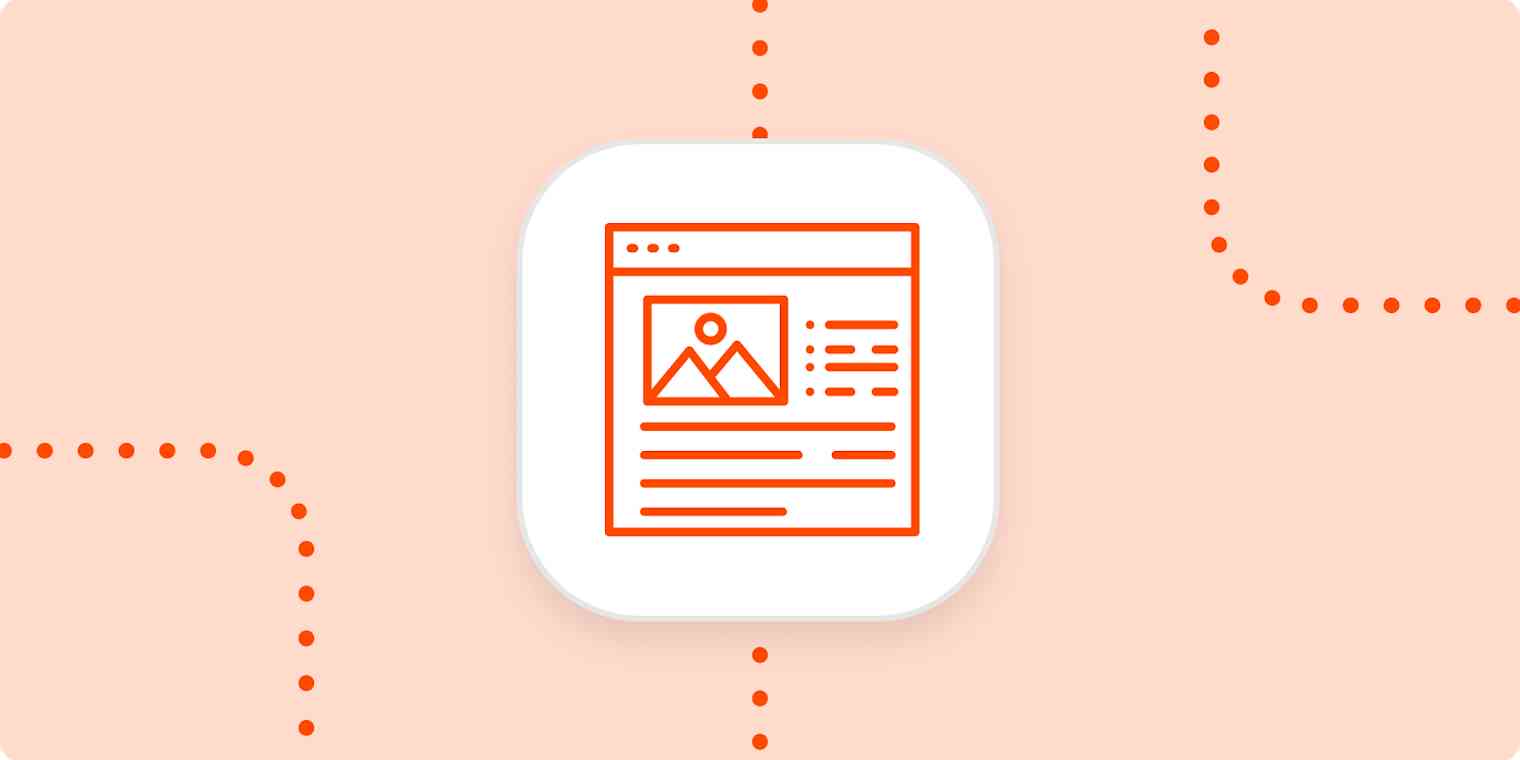If you create content on the internet, people will steal it. Terrible, yes, but that's just how it is. I've experienced it firsthand with articles I wrote for my health and wellness website, 7Sigma Physiques. In search engine result pages (SERPs), titles and meta descriptions would show up as if it were my website, but if you paid attention to the URL, you'd clearly see that it wasn't.

I'd spent countless hours writing valuable content to help my customers and get some love from search engines—just to have someone steal all of it, post it on their website, and have Google rank them instead of me. And it's not uncommon: Google's senior trends analyst, John Mueller, has confirmed that copied content can outrank original content. And besides affecting your rankings, it can also take away link equity since other websites could link to the other person's copied content instead.
If someone steals your content, it's up to you to get it taken down. Here's how to do that.
1. Find and contact the website owner
The first step in my mission to take down the culprit was to find out who was behind the website, contact them, and ask them nicely. Sometimes this works—especially if the website owner didn't realize it could hurt your SEO—but to be honest, it's usually futile. If someone steals your content intentionally, they're not going to take it down just because you ask them to.
I figured my efforts would most likely be in vain, but it's good practice to start here anyway (since the folks in the next steps might ask you to do that first).
If there's an email address or contact form on the website, use that. If not, you can use an email finder tool. That's what I did: I used Hunter.io, pasted in the URL, and voila, I had their email address.

I sent a polite email asking them to stop scraping my site and take down any copied content.
When crafting your email, you could give the webmaster a deadline. For example, tell them that if the content isn't removed in 48 hours, you'll contact their web host and have Google deindex their website. If you're lucky and the website owner replies and complies, this would be your first and only step.
But again, you'll probably get nothing but crickets.
2. Contact the web host
If the website owner doesn't comply, the next step is contacting the web host. If the host is WordPress.com (not WordPress.org—here's the difference), they have an easy form for you to fill out.
For non WordPress sites, most web hosts and registrars have an abuse or copyright infringement contact email address that you can use to file complaints and send a DMCA (Digital Millennium Copyright Act) takedown. To figure out who the web host is and how to contact them, use a free WHOIS search tool like DomainTools.

In most cases, you'll get a contact email address. If you don't, just head to the host's website and find their contact email. Since web hosts are legitimate businesses—not the ones stealing your content—they'll almost always have an easy way to contact them.
Here's some information you should include in your message to the web host:
Your name (and the name of your company, if applicable)
The reason you're writing (in this case, you'll notify them of the copyright infringement and unlawful use of your copyrighted material that appears on the service for which they're the designated agent)
A description of the work that's been copied (is it an image, a blog post, something else?)
The URL where the copied materials are
The URL of the original material (so they can confirm that it's stolen content)
Your request (in this case, it'd be immediate removal of the infringing material from their servers)
If you're in the United States, and the infringing website isn't registered or hosted in the U.S., a DMCA takedown notice won't mean much. That was the case for my stolen content—I still sent the notice to cross my T's and dot my I's, but I had to then proceed to the final step of the process.
3. Contact Google directly
If all else fails, you can have the content removed from Google. Keep in mind that, even if you're successful in having Google remove the site from their search results, they won't be able to remove it from the website that hosts it, so the copied content could still be found through their URL, social media sharing, or other search engines. But you'd be able to recoup most of your SEO efforts.
Google doesn't make this easy to find, but it's there. Go Google Legal Help and then click through: Google Search > Google Search > Intellectual property issue > Copyright infringement > Yes, I am the copyright owner or am authorized to act on the copyright owner's behalf > Other > Create Request.

Once you create the request, you'll be redirected to another page to fill out some information, including your name, email, a description of the copyrighted work, URLs of your original content, and URLs of the copied content (one per line). It's a lot like the WordPress form I mentioned before.

After submitting the form, you should get a confirmation message that Google has received your legal request, with a link to your Removal Dashboard where you can check the status of your submission.

How to check if your content has been stolen
If you ever do a Google search on yourself, you might stumble across stolen content. But what if you don't stumble across it? This whole experience made me aware of how common stolen content is and drove me to perform occasional check-ups on my content.
Here are a few tools you can use to check if your content has been stolen:
Google Alerts. Google Alerts is a free tool that sends you notifications whenever a search term you specify is mentioned on the web. To keep track of copied content, you can add a portion of your blog post as your search term. Learn how to set things up in this Google Alerts for SEO guide.
Copyscape. In Copyscape, you can simply add the URL of the page you want to check, and Copyscape will search the web for copies of it. The downside is that premium results aren't free.
Ahrefs Backlink Checker. When websites copy your content, they typically copy everything, including links. If you're doing proper internal linking, you'll receive links from their websites once they repost your content, and you can see them with Ahrefs' free Backlink Checker.
Hunting down content thieves and submitting takedown requests is never a good time. But it's almost inevitable that you'll have to do it eventually. Just know that most people go through this, so don't panic: follow these steps to get yourself back on track.





